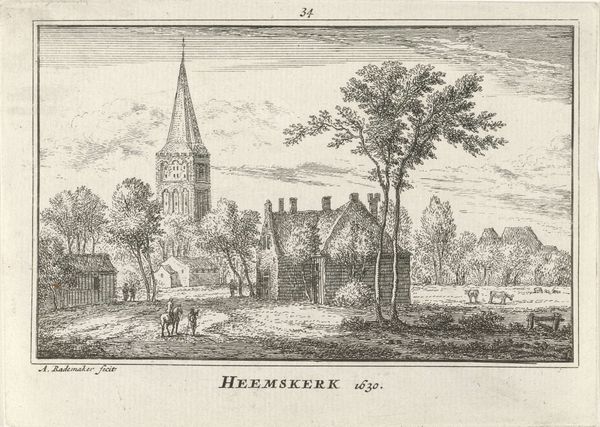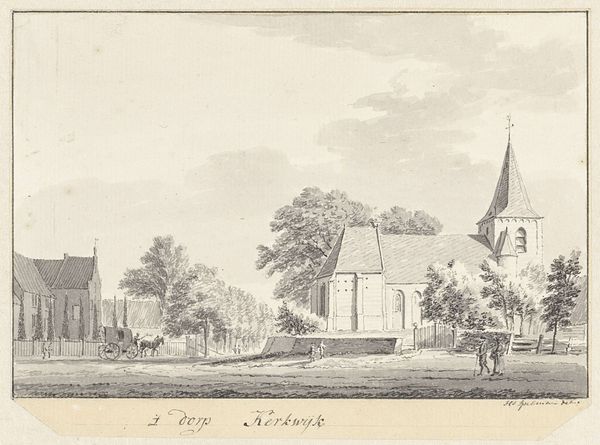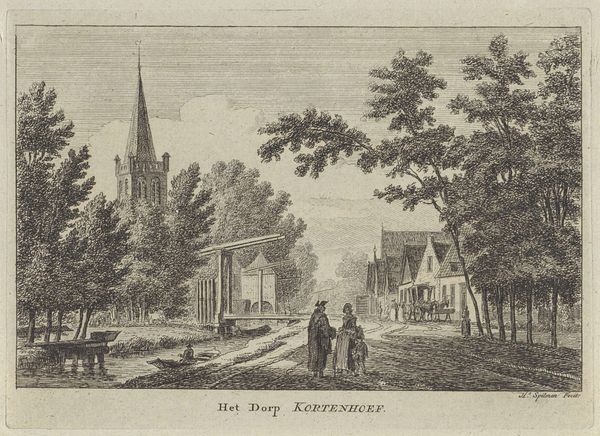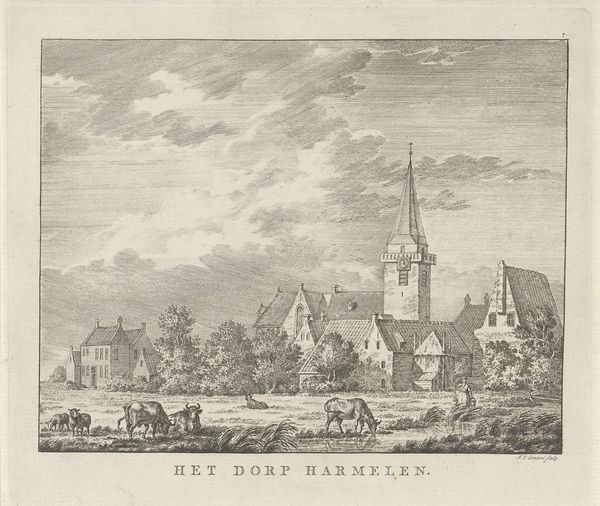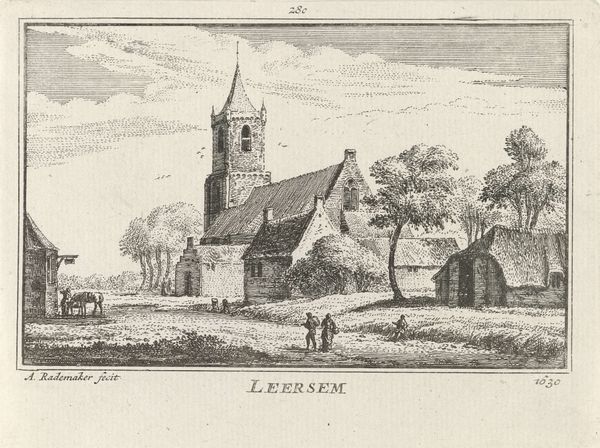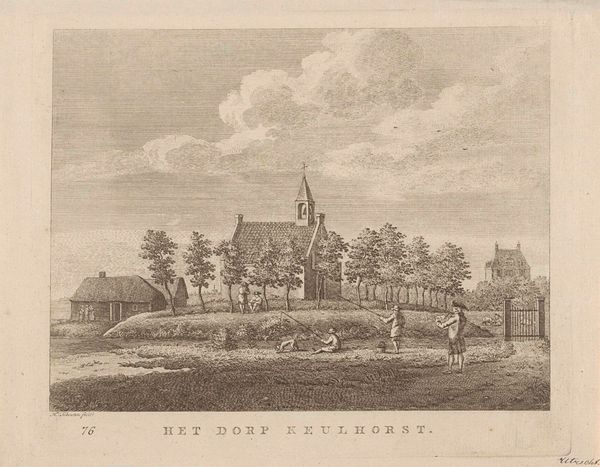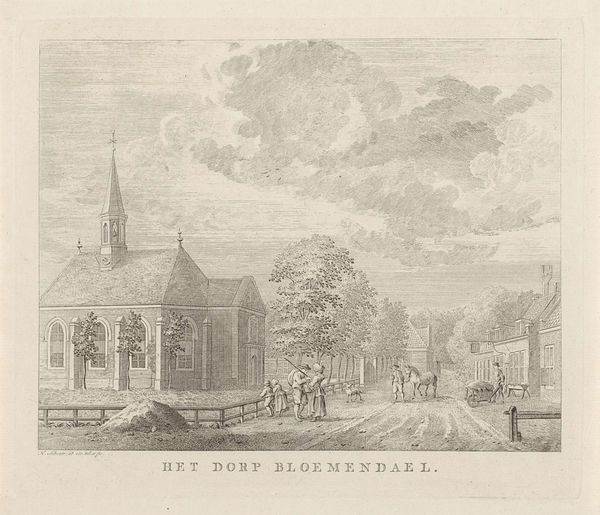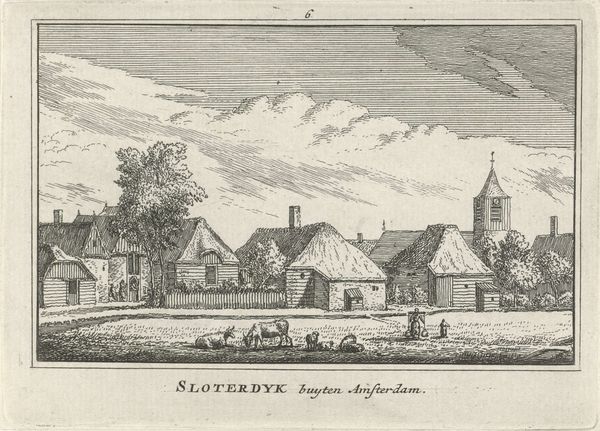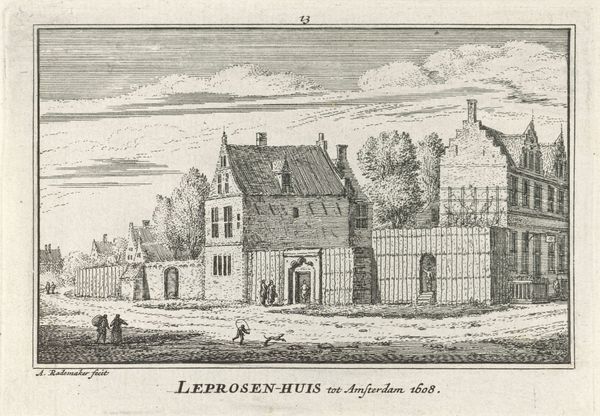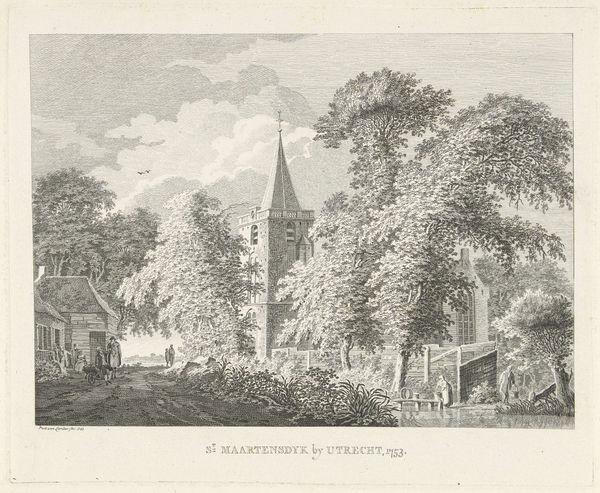
print, engraving
#
baroque
# print
#
landscape
#
cityscape
#
engraving
Dimensions: height 152 mm, width 215 mm
Copyright: Rijks Museum: Open Domain
Editor: Here we have Muyck’s "Leerbroek," an engraving dating from around 1740 to 1760. It depicts a quaint village scene. It feels very precise. How would you interpret this work from a formal perspective? Curator: Well, considering it through a formalist lens, we must attend to its composition and line work. The clear division between the foreground, with its strong diagonal leading lines, and the more diffuse background creates a spatial dynamic. Do you notice the variation in the mark-making? Editor: Yes, there's a contrast. The foreground has denser, darker lines creating a sense of weight, while the background is lighter and more open. The tree on the left side feels quite textured with all those dense marks. Curator: Precisely. Note how Muyck employs hatching and cross-hatching to modulate tone and volume. It creates the illusion of three-dimensionality on a two-dimensional surface. The steeple pierces through that layered system, adding verticality, a counterpoint to the earth-bound horizontality. Is this division important, do you think? Editor: I suppose it breaks up what could have been just a static scene? So that tension really comes from that calculated composition, not a story? Curator: Indeed. For a formalist, meaning resides not in external references, but in the interplay of forms themselves. It's about the visual mechanics, the semiotic grammar, if you will, not the narrative. The use of visual elements creates meaning, and is therefore an aesthetic response. Editor: So, appreciating it as an arrangement of lines and forms brings a whole new depth. Curator: Absolutely. Considering the piece’s formal components, how the artist composed elements like light, shadow, texture, and line in relationship to each other to guide our experience of viewing it offers a different appreciation. Editor: That makes me look at it in an entirely new way!
Comments
No comments
Be the first to comment and join the conversation on the ultimate creative platform.
